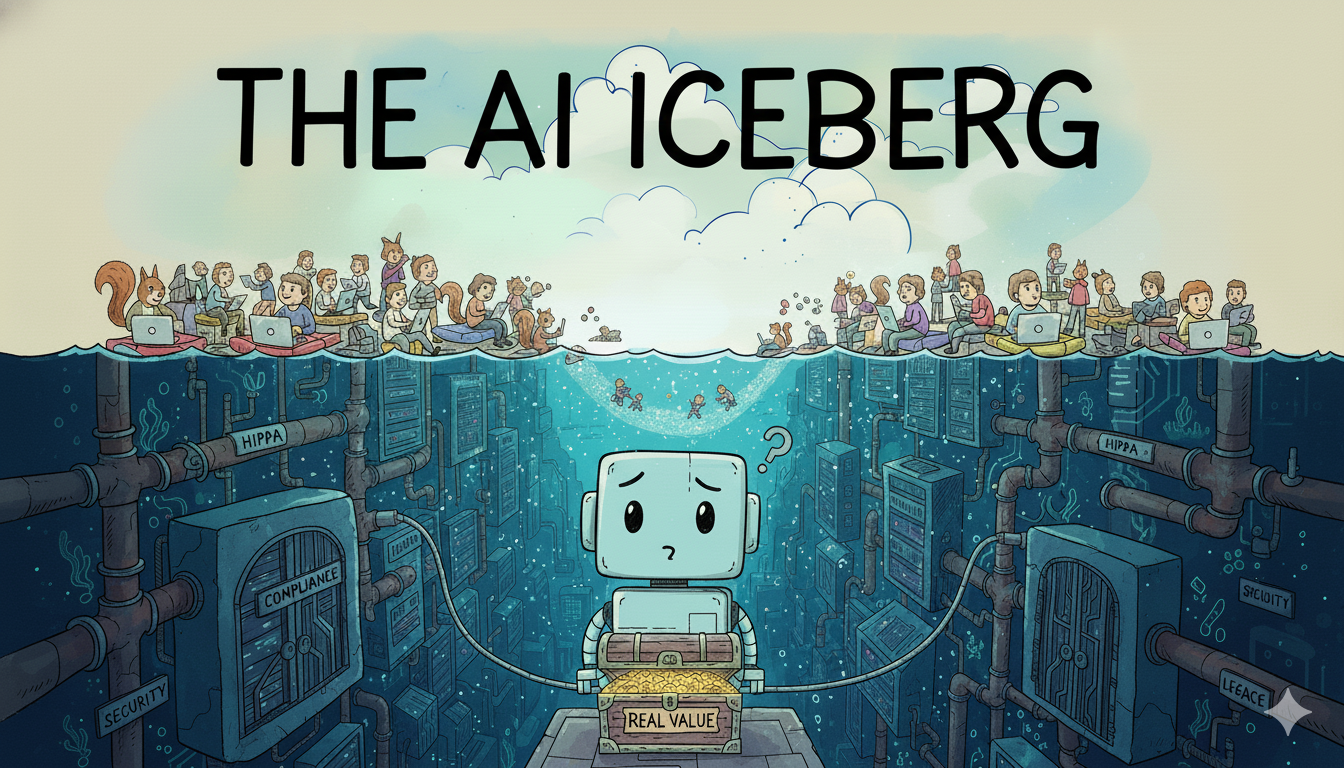The 800 Million Weekly ChatGPT Users Who Are Just Getting Started
Discover how 800 million weekly ChatGPT users are transforming information interaction and unlocking AI's vast potential for private data usage

The 800 Million Weekly ChatGPT Users Who Are Just Getting Started
Here's something that should excite everyone: ChatGPT just hit 800 million weekly active users. That's one in ten humans on Earth. Adoption faster than the world wide web. 18 billion messages every single week.
And the really wild part: we haven't even scratched the surface of what's possible.
What People Actually Do With It
OpenAI's latest research shows that ~80% of usage falls into three categories: Practical Guidance (tutoring, how-to advice), Seeking Information, and Writing. About 30% is work-related, 70% is personal - and both are growing.
What's remarkable is that AI is genuinely useful for public information right now. It's not replacing Google or Wikipedia - it's providing a fundamentally better way to interact with them. Instead of clicking through ten blue links and stitching together an answer yourself, you're having a conversation with knowledge.
That's actually pretty remarkable.
The Shadow Economy Is Showing Us What Works
MIT's Project NANDA study found something telling: "While only 40% of companies have purchased official LLM subscriptions, employees in over 90% of companies are using personal AI tools for work."
This isn't rebellion. It's validation. Consumer AI tools succeed in production 40% of the time compared to 5% for custom enterprise solutions. People are copy-pasting from Slack into ChatGPT, uploading spreadsheets to Claude, retyping meeting notes - not to circumvent IT, but because they've discovered something genuinely valuable and their companies haven't figured out how to provide official access yet.
This isn't a bug. It's a signal.
We're Still Playing in the Shallow End
All this incredible adoption, all this value creation, all these 18 billion weekly messages - they're happening with PUBLIC data.
ChatGPT (mostly) can't read your company's Salesforce records, access your Google Workspace docs, see your Slack history, review your customer support tickets, understand your codebase's context, or know what happened in yesterday's all-hands.
We've spent $300 billion on AI infrastructure to build something amazing that helps people learn, write, solve problems, and navigate information in entirely new ways. But we've done it without AI touching the vast majority of the world's relevant data.
The adoption patterns show the potential: UAE leads at 59%, growth in low- and middle-income countries is 4x faster than in wealthy nations. We're watching AI democratize access to knowledge globally. Now imagine what happens when it can work with local information, personal context, private knowledge bases.
Two Industries Show What's Coming
Only two industries show "clear structural disruption" so far: media and tech. Why? Their data is already public.
Every other industry is waiting behind their data walls - healthcare behind HIPAA, finance behind regulations, legal behind privilege, manufacturing behind IT policies, retail behind legacy systems from the 1980s.
These aren't failures. These are opportunities waiting to be unlocked safely.
What Happens Next
The companies winning this race won't have the biggest models or the most nuclear reactors. They'll be the ones who figure out how to let AI see actual data while keeping it secure, compliant, and private.
Year 1-2 (Now): Early adopters crack safe internal system connections. Their productivity gains will make current "shadow AI" ROI look quaint.
Year 3-5: Privacy-preserving AI architectures become standard. We solve the "how do I let AI see my data without exposing it" problem.
Year 5-10: AI working with private data becomes the norm. We'll look back and realize 2025 was still the early days.
This is the hard problem. The important problem. The problem that, once solved, will make the current wave look like a warm-up act.
What This Means
If you're building: Focus on the private data problem. Secure, compliant AI access to internal systems will create more value than another benchmark improvement.
If you're leading a company: Learn from your shadow AI users. They're showing you what works. Don't ban it - understand it, then provide something better and safer.
If you're worried: The current wave is the training session. The real transformation happens when AI gets access to private data.
The Real Story
800 million weekly users is extraordinary. 18 billion messages is remarkable. Adoption faster than the web is historic.
And it's all happening in Act One.
We're watching people discover that AI is a fundamentally better way to interact with information. They're getting genuine value from tutoring, writing assistance, information synthesis, and decision support.
Now imagine that same capability applied to your company's institutional knowledge, your medical history, your financial picture, your organization's customer insights, your research data.
The real AI revolution doesn't start when we build bigger models. It starts when we solve the private data problem safely - when AI can work with the information that actually runs the world while maintaining privacy, security, and compliance.
The shadow AI economy isn't a problem to be fixed. It's a preview of what's coming when we get this right.
P.S. - The irony of writing this analysis without AI being able to see my actual blog metrics, email, calendar, or any proprietary data that would make this 10x more insightful is not lost on me. That's exactly the point.
Want to learn how intelligent data pipelines can reduce your AI costs? Check out Expanso. Or don't. Who am I to tell you what to do.*
NOTE: I'm currently writing a book based on what I have seen about the real-world challenges of data preparation for machine learning, focusing on operational, compliance, and cost. I'd love to hear your thoughts!